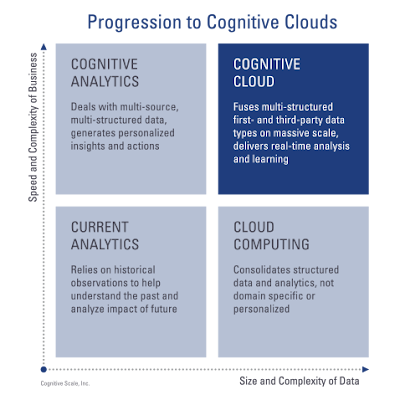Twitter Feed
Yahoo-Microsoft Merger Proxy Fight – May 14, 2008
As I alluded to last week, “It’s not over ’till it’s over” Carl Ichan Looking to Start Yahoo Proxy Fight Money – The Microsoft-Yahoo Merger may not be over. Billionaire…
Now in the ring Sun/Amazon! – May 04, 2008
The Sun/Amazon cloud may be announced soon. Sun CEO Jonathan Schwartz delivered a short keynote at Startup Camp in San Francisco, an adjunct event to the JavaOne Conference. According to…
Microsoft gives up on Yahoo? – May 04, 2008
“Cloud computing is far more than a concept. With Broadband Internet connections now all-but-ubiquitous and microcomputers and locally-run software now so trouble-prone, Cloud Computing’s time has come.” This is a…
IBM, Google and the Blue Business Platform – May 01, 2008
Today was good !! This morning. there was a main session built around “CIO 2.0”. The basic premise was that CIOs have now earned a seat at the business management…
The coming cloud – April 30, 2008
I attended the IBM Public Sector briefing this morning. The IBM executives were clearly basking in a financial performance glow. After ending 2007 with increases in revenue, profit and earnings…
Google, Cloud Computing, and the US Intelligence Community – April 29, 2008
Just arrived in Los Angeles for the IBM Business Partner Leadership Conference. IBM is billing this as a “new” conference, but I have my doubts. I am, however, very interested…
Location Based Services – April 25, 2008
INmobile.org is a exclusive community for executives in wireless industry. As a member, I have the opportunity to participate in a number of interesting discussions about mobile and wireless technology.…
IBM Business Partner Leadership Conference – April 23, 2008
I just completed registration for the IBM Business Partner Leadership Conference. This is a new invitation-only conference being held this year in Los Angeles from Wednesday, April 30th through Friday,…
Telephone & Web = WOW !! – April 21, 2008
The power of the Internet and the web lies in its ability to provide access to information. The mobile web takes this one step further with its ability to provide…
According to the IBM Institute for Business Value the market will see a rapid adoption of initial cognitive systems. The most likely candidates have moved beyond descriptive and diagnostic, predictive and routine industry-specific capabilities. 70 percent of survey respondents are currently using advanced programmatic analytics in three or more departments. In fact, the widespread adoption of cognitive systems and artificial intelligence (AI) across various industries is expected to drive worldwide revenues from nearly US$8.0 billion in 2016 to more than US$47 billion in 2020.
The analyst firm IDC predictsthat the banking, retail, healthcare and discrete manufacturing industries will generate more than 50% of all worldwide cognitive/ AI revenues in 2016. Banking and retail will each deliver nearly US$1.5 billion, while healthcare and discrete manufacturing will deliver the greatest revenue growth over the 2016-2020 forecast period, with CAGRs of 69.3% and 61.4%, respectively. Education and process manufacturing will also experience significant growth over the forecast period.
th’s ability to replicate intuitive experiences provides a number of opportunities within sentiment analysis. With its ability to understand scenes and context, it can decipher how people are feeling based off facial expressions or voice stress levels.
- Need robust and simplified data classification processes in order to more easily deliver industry and business model specific value;
- Require the implementation of information technology security controls that are driven by data value and role based access control paradigms; and
- Leverage software applications that should be developed using ISO 27034 which is a multi-part standard on specifying, designing/selecting and implementing information security controls through a set of processes integrated throughout an organization’s Systems Development Life Cycle/s (SDLC).
( Thank you. If you enjoyed this article, get free updates by email or RSS – © Copyright Kevin L. Jackson 2016)
Cloud Computing
- CPUcoin Expands CPU/GPU Power Sharing with Cudo Ventures Enterprise Network Partnership
- CPUcoin Expands CPU/GPU Power Sharing with Cudo Ventures Enterprise Network Partnership
- Route1 Announces Q2 2019 Financial Results
- CPUcoin Expands CPU/GPU Power Sharing with Cudo Ventures Enterprise Network Partnership
- ChannelAdvisor to Present at the D.A. Davidson 18th Annual Technology Conference
Cybersecurity
- Route1 Announces Q2 2019 Financial Results
- FIRST US BANCSHARES, INC. DECLARES CASH DIVIDEND
- Business Continuity Management Planning Solution Market is Expected to Grow ~ US$ 1.6 Bn by the end of 2029 - PMR
- Atos delivers Quantum-Learning-as-a-Service to Xofia to enable artificial intelligence solutions
- New Ares IoT Botnet discovered on Android OS based Set-Top Boxes



